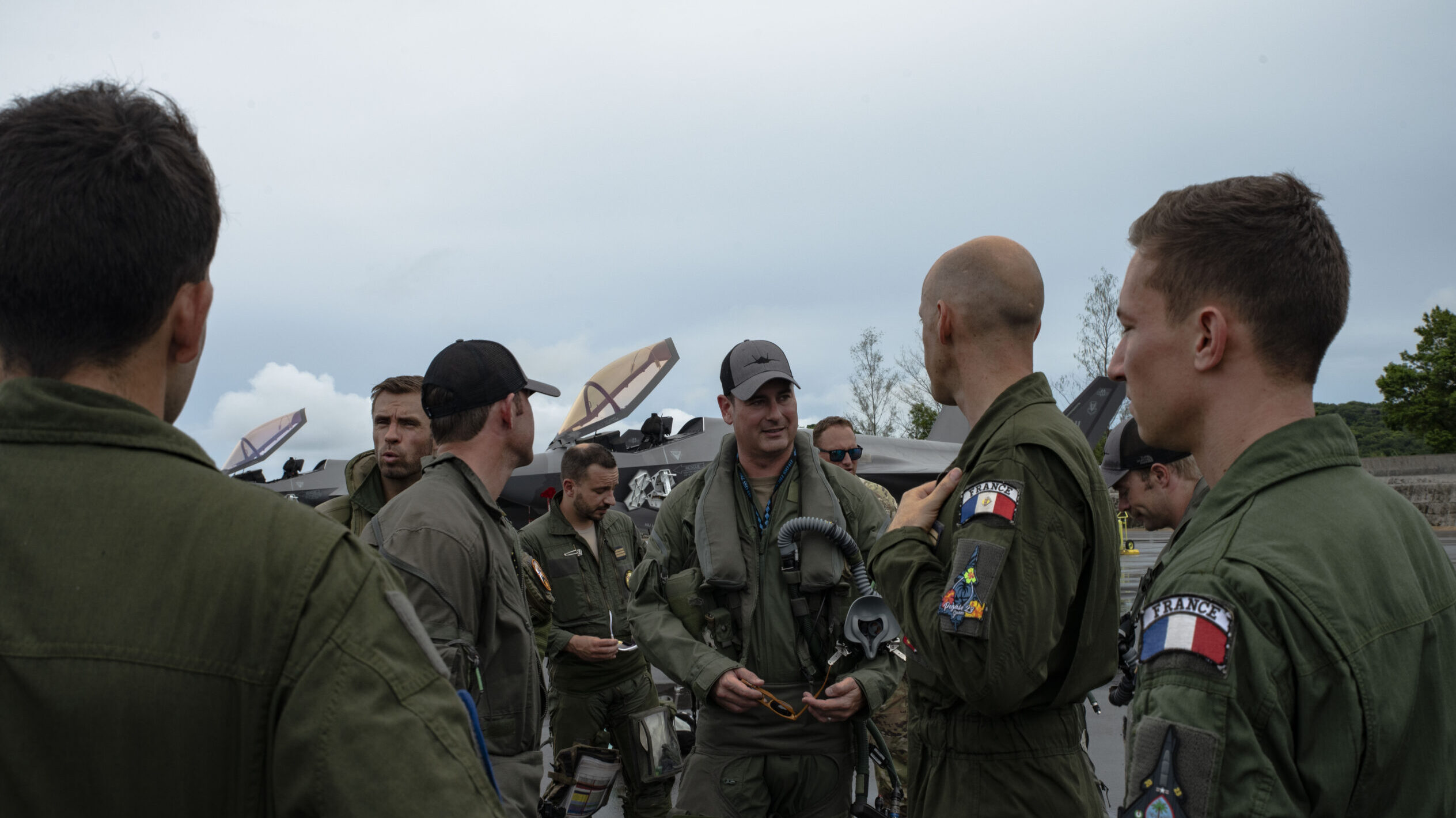
US F-35 pilots from 419th Fighter Wing, and French Air and Space Force Rafale pilots after flight at Roman Tmetuchl International Airport in Koror, Palau, July 7, 2023 during Northern Edge 23-2. (U.S. Air Force Lt. Michelle Chang)
SYDNEY— During the recently concluded Northern Edge 23-2 exercise, US Air Force pilots focused heavily on practicing what is known as agile combat employment in the Pacific — essentially, making sure US forces could land on small islands, quickly resupply, and get back up to the fight.
It’s a concept that relies heavily on working with allies and partners in the region, but while much of the focus in Washington has been on the technical how-to of the strategy, operators who talked with Breaking Defense about the exercise, which ran July 2-21, also emphasized the experience they gained in the more prosaic issues of dealing with their Japanese and French counterparts.
Questions like, Should I just walk up to a Japanese airman and ask him a question when he’s working on something? Where’s a translator to make sure my coalition partner, whose English may be much better than my Japanese, understands and can respond accurately to a technical discussion? And how do you ensure you and French colleagues, who may use very similar tactics, techniques and procedures, know what you’re talking about when they use different words to describe those TTPs?
Lt. Col. Jon “Ghost” White, an F-15E pilot who commands the 366th Air Base Squadron, which handled support functions at dispersed locations during the exercise, laid out his experiences in an interview with Breaking Defense. White’s team worked specifically with members of the Japanese Air and Maritime Self Defense Forces, who helped load and unload cargo from US transport planes on Iwoto, the island formerly known as Iwo Jima, as well as Japanese communications and medical teams.
White had worked on a range of US air bases doing agile basing so he understood the mechanics of it, but working with the Japanese “brought a whole new level of complexity,” he said. “When you deal with a partner nation you have to learn how they’re set up. And, also, in this case there’s obviously a language barrier.”
He gave the example of “in the US I might just walk up to someone pretty much regardless of what they’re doing.” Luckily, he had Senior Airman Eric Fletcher from the 35th Communications Squadron, who is fluent in Japanese, along. “It was a huge boon. He could look at me, and say, “hey, sir. You know, they are trying to do this this right now. We just need to wait a little bit so that we’re not interrupting what they’re doing.'”
The experience of Guam-based F-35 pilots working with French Rafale fighter pilots in the island state of Palau was considerably different. What the pilots called “integration” and “interoperability” with the French was “amazing,” said Maj. Chris “Kosmo” Cady, an F-35 pilot with the 466th Fighter Squadron, in part because “fighter pilot culture … is pretty universal.” The French want to execute the same tactics, techniques and procedures that US pilots do. “They just speak in different terms,” which Cady said he and his crews were able to use. “Then we were able to operate seamlessly between the two allies and accomplish the mission in the same manner that we would if we were all just US Air Force units operating together.”
Part of the reason for the fluid and effective communications arose from a simple fact, said Cady: “The French pilots spoke incredible English, so we were able to operate really well together.”
This extended to highly technical operations like airborne refueling, Cady said. “They were able to make it very simple, just have a quick discussion and we made it happen,” refueling F-35s from French MRTT tankers. That helped allow them to operate over a vast area — up to 1,000 miles from base — and from multiple locations.






















